Movie Review By: SFAM
Year: 2002
Directed by: Steven Spielberg
Written by: Philip K. Dick (short story), Scott Frank & Jon Cohen (screenplay)
IMDB Reference
Degree of Cyberpunk Visuals: High
Correlation to Cyberpunk Themes: Medium
Key Cast Members:
Chief John Anderton: Tom Cruise
Pre-Crime Director Lamar Burgess: Max von Sydow
Agatha: Samantha Morton
Danny Witwer: Collin Ferrel
Evanna (John’s Wife): Jessica Capshaw
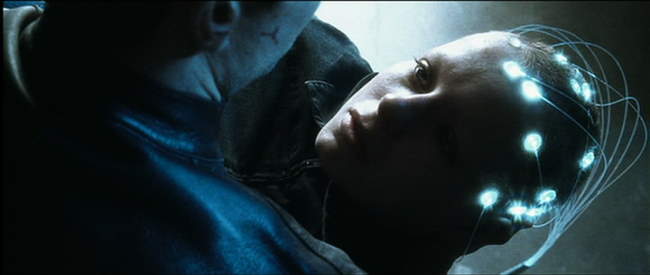
Overview: Minority Report, directed by Steven Spielberg, is another one of the large scale production cyberpunk movies that cleared a hefty gross (358 million worldwide, not counting DVD sales). Minority Report works both as a summer blockbuster (it was released in June), but also as a fairly intelligent cyberpunk flick. Based on another terrific story from Phillip K. Dick, Minority Report has a terrific cast headed up by Tom Cruise and Max Von Sydow, awesome special effects, and terrific music and sound FX throughout.
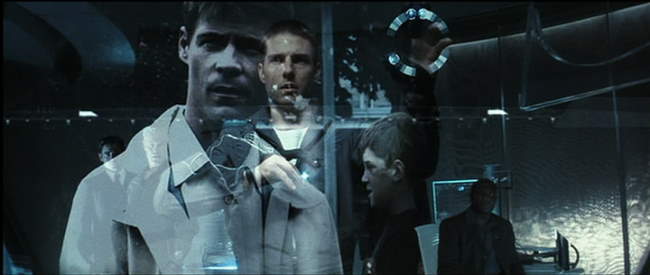
The Story: In Minority Report, Tom Cruise stars as John Anderton, a police chief at the head of an elite pilot police program, now in its sixth year, that prevents crimes BEFORE they are committed. The year is 2054, and the ability now exists within gifted, but altered people called “precogs” to tell when someone is about to commit a crime. The Precogs, comprised of two twins and one woman, Agatha (played wonderfully by Samantha Morton), are kept at all times in a dreamlike state in strange pool of water. The Precogs receive visions of murders that will be taking place. Based on an elaborate system that works off the Precogs, the police are able to extract the visions and are given the names of the murder victim and the murderer on color coded balls. Based on this, all premeditated murders have become a thing of the past – now the only murders that “might” take place are the crimes of passion, or “red balls” in Minority Report terms. When a red ball comes, the John Anderton must quickly work with the dreams to find the location of the murder (which often is only a few minutes or hours into the future) so that his team can rush to prevent it.
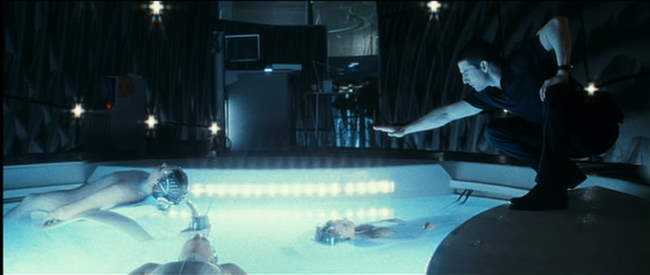
The end result of this technology is that people are being imprisoned for the crime PRIOR to committing it. Those who are identified by the Precogs are immediately sentenced to a strange virtual prison, where they are stuck in perpetual dreamstate (no word is given why they aren’t relegated to a normal prison). Through a quirky situation, John Anderton is brought in close proximity to the Precog, Agatha – she grabs him and fervently relays a vision that has occurred in the past. In tracking this down, John Anderton learns that sometimes one of the three Precogs actually deliver a vision that differs from the other two. This vision, termed a “Minority Report” is quickly discarded so as not to be seen as threatening the integrity of the process.
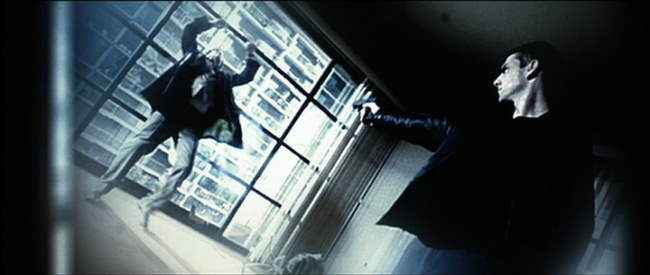
Anderton, plagued by the death of his son by an unknown assailant prior to the Precogs, has traditionally been the program’s biggest proponent. However, after learning of the Minority Report, he becomes concerned with the possibility that he has in fact been putting innocent people away. But unfortunately, his investigation into this matter has created powerful enemies. A new red ball vision is created, only this time Anderton finds out that HE is supposed to commit a murder in 36 hours. Convinced that he has been unfairly targeted, Anderton escapes from his former team and goes on a crusade to clear his name. His plight forces him to replace his eyes (used for retina scans at all security posts), and eventually takes him to the bottom of the Pilot Program’s seedy beginning.
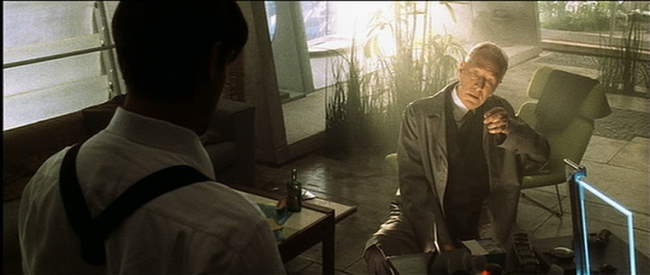
Story Issues : Nevermind the issue that the creepy hacker dude is able to jury-rig a vision scanning and extraction device faster than Scotty can fix a warp drive, Minority Report has a major issue with the technology that’s really never taken seriously – the issue of freewill. If precogs really can see into the future and determine that someone “will” murder their intended victim, this negates the ability of choice at that last instant of the murder. While this is eventually addressed (no spoilers), there is no rationale provided for why freewill was ignored. In the end we are left with believing that over-zealous law enforcement personnel were able to convince the entire country to take this approach. While this is a fine plot point, it would have been far more believable had their been some indication that they actually had to do a massive conving job.
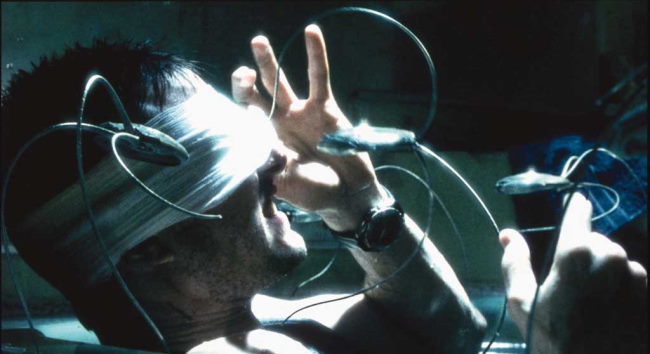
The Eyeball – the Ultimate Security Breach: The other issue with the story that really defies believability is that when John Anderton is caught, he is CONTINUALLY able to get back into the most secret areas of Police HQ by using his former eyeballs, which he keeps with him in a plastic baggie. Even though the police know he’s on the lamb, the apparently don’t feel the need to revoke Mr. Anderton’s security access privileges. This is all the more disbelievable considering EVERYTHING in society is apparently keyed off a retina scan. Sure, OK, perhaps one time they lapse on this, but three times??? Common Steven – you’re too good a story teller to let that one slide.
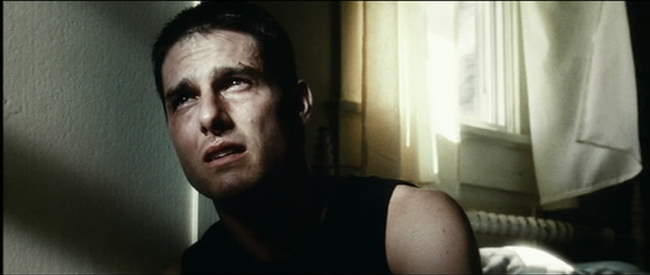
The Visuals: The visuals are sleek and well integrated, with some nice aqua and blue tones throughout. Interestingly, Spielberg usually goes with an overexposed type of shot to make it look almost as if one is looking at a dream sequence. Continually, we get white saturation dominating the shots. While this approach sounds weird, it ends up working wonderfully in adding to the mood of a cyberpunk film that has a massive focus on visions and dreams. As always, Spielberg gives us a plethora of truly unique visuals and mood shots. The best of the movie comes when Agatha
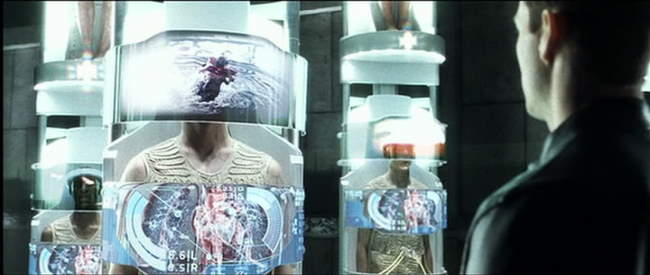
The FX: Minority Report consistently has absolute top-notch FX that adds interesting elements to the story. From the strange spider surveillance things, to the Boba Fett Police Podships, to the mixed modern cityscapes, the world of Minority Report comes off as a truly odd cyberpunked future. At some level, everyone seems to be living normal lives. Yet every now and then, we get a sense that the surveillance society has taken hold to the point that people have all just accepted it.
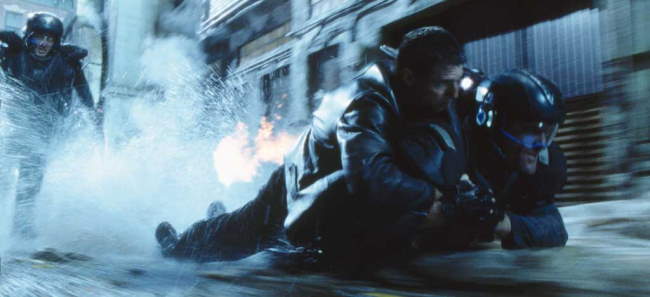
The Bottom Line: The overall mood and FX in Minority Report are terrific. The acting is great - Cruise has rarely been better, but also Von Sydow as the Police Director, Collin Ferrel as the scheming FBI agent, and Samantha Morton as the Precog are all terrific. The FX and sound If you buy the technology, chances are you give Minority Report at least a 9 or 10 star rating. Unfortunately, I did have problems buying some of this. Regardless, the story issues don’t take too much away from a very worthy cyberpunk film.
Page 2: More Screencaps–>>
~See movies similar to this one~
Movie Review By: SFAM
Year: 2005
Directed by: Michael Bay
Written by: Caspian Tredwell-Owen, Alex Kurtzman & Roberto Orci
IMDB Reference
Degree of Cyberpunk Visuals: High
Correlation to Cyberpunk Themes: Medium
Key Cast Members:
Lincoln Six Echo/Tom Lincoln: Ewan McGregor
Jordan Two Delta/Sarah Jordan: Scarlett Johansson
Merrick: Sean Bean
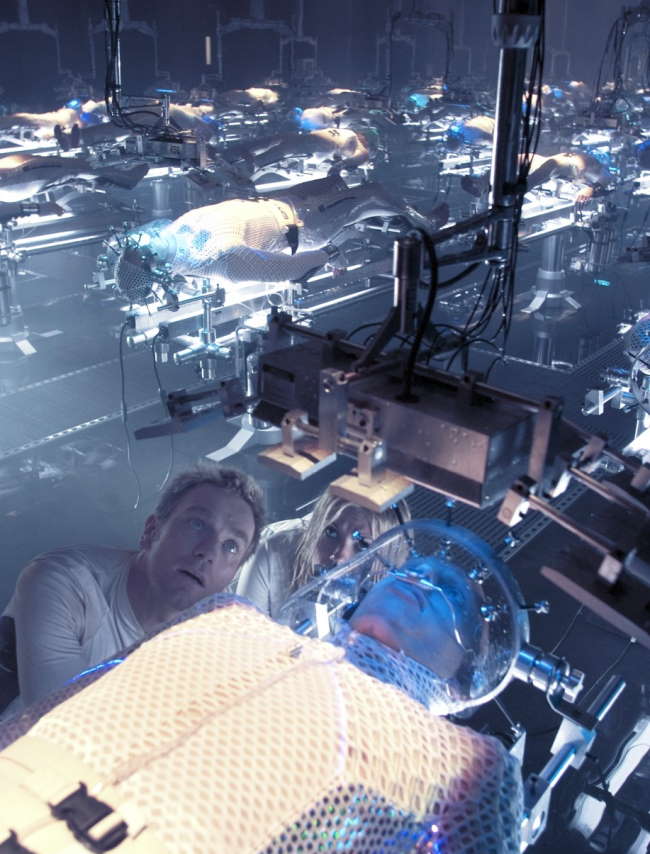
Overview: The Island is straight Hollywood fare from the get go. In this summer bubble gum scifi-action romp, you’ll find few original ideas here, or even a coherent plot, but you will find loads of awesome visuals and even more action scenes and explosions. Vast amounts of money went into creating some rather incredible action sequences. Unfortunately, with all the thought devoted to creating those sequences, there apparently was little left for the story itself. Still, Scarlett Johansson looks absolutely gorgeous in The Island, and Ewan McGregor works as a leading man.

The Story: In the future, the desire among the rich and famous to live for ever dominates their existence. Along comes Dr. Merrick (Sean Bean) who founds the Merrick Corporation to meet this market need. The Merrick Corporation has (supposedly) found a method to take a person’s DNA and clone all of their organs within a gelatinous blob that maintains a persistent vegetative state. Unfortunately, they were never able to make this work, so instead, the Merrick Corporation broke all the laws and went with straight cloning of their human sponsors. For a cool 5 million bucks, sponsors can buy an insurance policy to ensure they always have a perfect set of organs that can be harvested to save them from whatever malady arises.
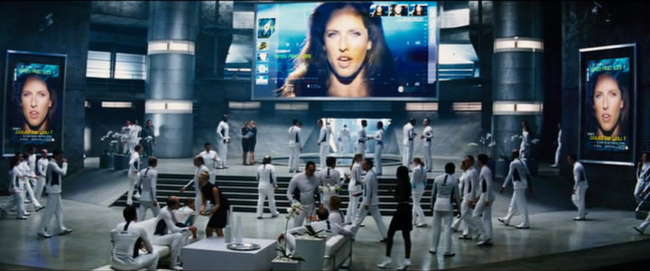
To keep the clones under control, Dr. Merrick constructs an alternate reality where a contaminated world has killed everyone except for a few fortunate souls who were rescued and placed into a special set of buildings. They have also saved an Island, which is now the only place on earth where people can live without dying. Now all the clones await their turn in the lottery, which, if won, supposedly means they will be able to go to the Island. In reality, the clones are “selected” when their sponsor has need for one of their body parts. From their diet to their associations with others to their urine output, every aspect of a clone’s life is monitored. THX-1138’s surveillance society, right down to the oppressive white, is omnipresent in The Island.
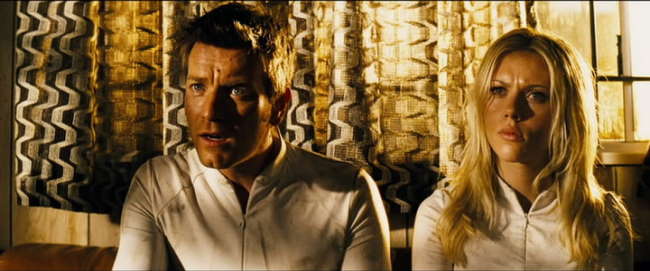
Lincoln Six-Echo, played by Ewan McGregor, is a clone who starts questioning his surroundings. He eventually gets out (through a completely idiotic plot point) and realizes that that those who leave to go to the Island are in fact being murdered. He quickly goes back to get his close friend, Jordan Two-Delta (Scarlett Johansson) who just yesterday was selected to go to the Island (her sponsor is dying from wounds suffered in a car crash). Together, they make a break for it, but are pursued by (we are told) a crack-group of ex-special forces agents led by Djimon Hounsou. With the help of a low-level employee (Steve Buscemi) that Lincoln Six-Echo befriended, Lincoln and Jordan make for Los Angeles in an attempt to find Lincoln’s sponsor to discover the truth. From there, The Island turns into a high-tech, futuristic chase movie, with continually larger explosions and action sequences dominating screen. I won’t spoil the ending for you, but suffice to say this movie is as predictable as they come.
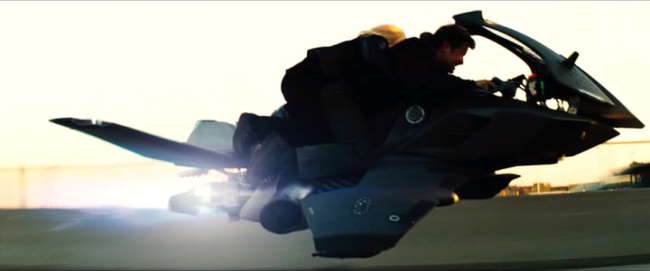
Michael Bay’s Approach to Story Telling: It’s pretty clear that director Michael Bay doesn’t plan movies like most directors. He seems to pay FAR more attention to the visual progression than he does the actual dialogue. The narrative in Island, like most of his movies, simply doesn’t hold together. To buy it, you have to accept all sorts of inane action on the part of the characters. Michael Bay seems to construct his movies via storyboards alone – for instance, he knows that in the end, the hero and the bad guy need to fight on a high-tech, scary looking bridge with explosions going on in the background – he is far less concerned about the rationale that brings them together. In watching it, the Island is one of those rare movies that is actually more coherent if you turn off the sound. The story you make up to go with the visuals will almost certainly make more sense then some of the plot points Bay provides.
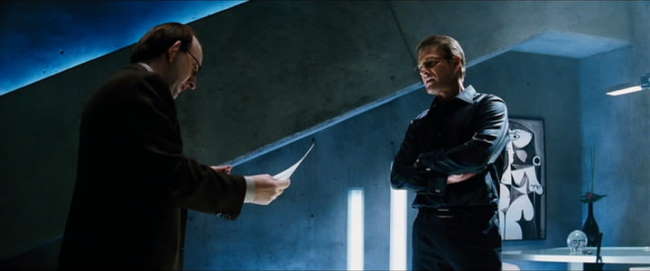
I don’t even mind that we have to accept that two clones, three and four years old, are able to outwit an entire platoon of ex-special forces personnel, or that they “magically” assume all of their cloned person’s skills (like riding flying motorcycles). I can even accept that a supervisor on a regular basis, gives a clone a key that gets him to the outside world to save the supervisor from running errands, or that the the police regularly park their squad cars in the middle of an intersection and then don’t look for broadsides, but some of the basic plot stuff really does bother me. In the Island, the cloning is a HUGE secret that implicates the entire corporation into illegal action, but none of the investors, including the Defense Department which as spent 120 Billion on this “technology,” ask any questions. Even more incredible, none of the hundreds, if not thousands of low-level employees have ever consider spilling the beans. Instead, they are so closed-mouthed, they don’t even tell their family members. Killing is cool for them, as long as they get to keep their meager paychecks. This is just one example – far worse are the ending plotlines, which have our heroes assuming that top-notch special forces personnel wouldn’t search them for weapons even after they’ve shot people (lucky for them, the special forces personnel complied), that hired thugs would hang out and watch their boss go mono-a-mono with the hero vice wasting our hero, and that the boss himself, up in the comfort of his office, would be able to make it to the hero far quicker than any of his hundred thugs who’s job it is to enforce the peace.

Product Placement Gone Wild: It’s kind of refreshing to know that in the future, all dehumanized clones have to wear Puma shoes and clothing, drink Aquafina, serve Ben & Jerry’s Ice cream to kids, model for Calvin Kline on billboards, play Xbox, seek out MSN Search as a phone book, conduct their slave work on Apple computers, steal American Express credit cards, snag rides on Mac Trucks, wear Monza watches, and look longingly at Michelob Light beers. And of course, EVERYONE will be driving either Cadillacs or Dodge Magnums in the future. The Bond movies, where you expect significant product placement, don’t hold a candle to the monstrosity that is The Island. Not only do we get an obscene number of product placements, the on-camera product “lingering” that Mr. Bay engages in is almost criminal. I felt like I should have gotten a discounted ticket due to the myriad of embedded commercials. It’s rather amazing if you think of it – that almost 70 years into the future, all these companies will still be using the same logos they use today. I must say though the product placements are very memorable – they make be both remember the product and more importantly, they instill in me the STRONG desire to never buy these products again, as I now associate these brands as contributors to fucking up my movie watching experience.
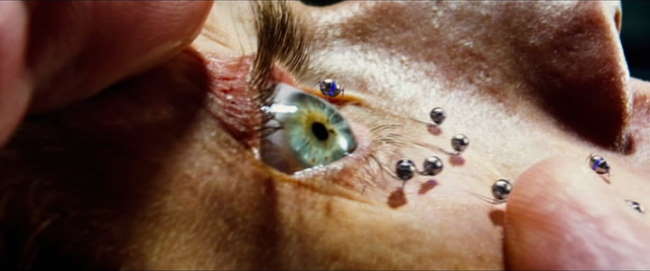
The Visuals: While I’ve bashed the Island’s plot, Michael Bay certainly deserves a lot of credit for delivering some pretty cool cyberpunk visuals. The clone development labs look pretty darn cool. Additionally, Michael Bay continually composes shots displaying wonderful color panoramas. We get gorgeous yellows and blues in a variety of textures and settings. In scene after scene, it becomes clear that while Bay isn’t too concerned about the dialogue or narrative sequences, he’s intimately involved in the look. In some cases though, the visuals, while impressive, make absolutely no sense – the worst example being the weird eye-nanobots that are needed to take pictures of the brain activity. That its necessary to have metal insects entering the eye in order to take a brainscan 70 years into the future strains credibility far past the point of reason – even worse, the brainscan cannot be processed until 48 hours!
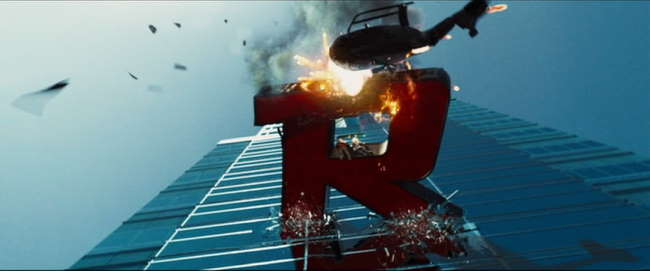
The Action Sequences: Michael Bay is known primarily for his outrageous and visually impressive action sequences. He does not disappoint in the Island as the action is consistently top notch. We get awesome explosions, incredible chase scenes and lots of gun fire and fight sequences, all with wonderful camera angles and high quality positional surround sound. If there’s one reason to definitely not miss the Island, it’s the action sequences. Michael Bay may not be a great film maker, but he and his crew are genius at constructing creative, eye-poppingly tense action.
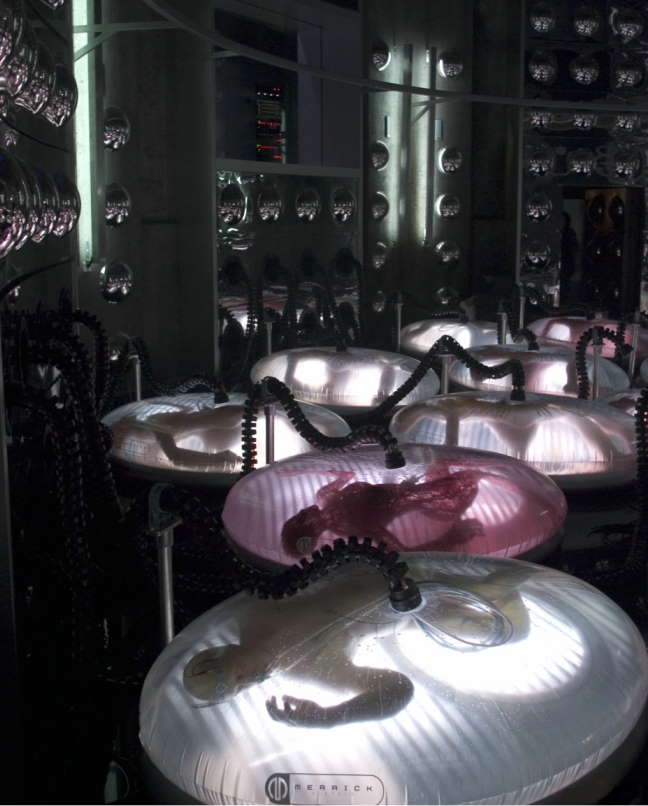
The Bottom Line: If there was one change I would make to the story, I would have suggested they had done away with the illegal nature of cloning (the second change would be to eliminate the magical memory transferral that happens between clones and sponsors). The Island would have worked far better if it portrayed a world were society as a whole had decided that cloned people were property. Instead, the Island practically ignores this question. But while I have a hard time suspending disbelief for the plot the Island provides us, I probably would have given it six stars, similar to a number of other Hollywood movies high quality visuals and significant plot issues. Unfortunately, the obscenely over-the-top product placement deserves at least the loss of one star. Not only are there over a dozen companies, the “linger” factor makes it clear that you’ve just paid to watch a commercial. In the end, this is simply asinine and reflects poorly on the studio (Dreamworks), the film maker (Michael Bay), and the products themselves (too numerous to mention). I would conservatively guess that the product placement easily cost the Island many tens of millions in lost revenue. The Island cost 126 million to make but only brought in 35 million, large part because virtually all reviews discussed the overbearing product placements. Word of mouth from viewers merely confirmed that if you pay to watch this in the theatre, you will be paying for commercials.
~See movies similar to this one~
Movie Review By: SFAM
Year: 2005
Directed by: James Bai
Written by: James Bai
IMDB Reference
Degree of Cyberpunk Visuals: Low
Correlation to Cyberpunk Themes: High
Key Cast Members:
- Puzzlehead/Walter: Stephen Galaida
- Julia: Robbie Shapiro
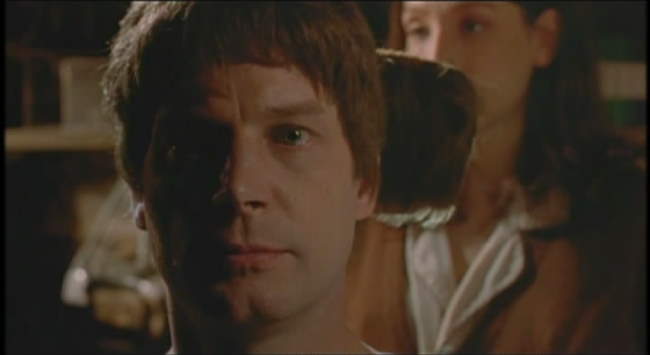
Overview: First let me give a great big THANK YOU to Puzzlehead Director, James Bai, who gave me a copy of this movie to review, even though it has not yet been released for general distribution (Indie filmmakers - take note! Feel free to send me your cyberpunk films to review prior to release!  ). In looking at the movie poster and in hearing from others, I just HAD to get a copy of this to watch. Puzzlehead is about as far as you can get from a Hollywood production. You won’t see fast-paced action sequences here (quite the contrary – the movie is very slow paced), nor will you get futuristic scenery, or high-end FX. But make no mistake – even though the cyberpunk visuals are sparse, this is DEFINITELY a cyberpunk movie. The themes introduced and the fractured sense of humanity are fully cyberpunk. ). In looking at the movie poster and in hearing from others, I just HAD to get a copy of this to watch. Puzzlehead is about as far as you can get from a Hollywood production. You won’t see fast-paced action sequences here (quite the contrary – the movie is very slow paced), nor will you get futuristic scenery, or high-end FX. But make no mistake – even though the cyberpunk visuals are sparse, this is DEFINITELY a cyberpunk movie. The themes introduced and the fractured sense of humanity are fully cyberpunk.
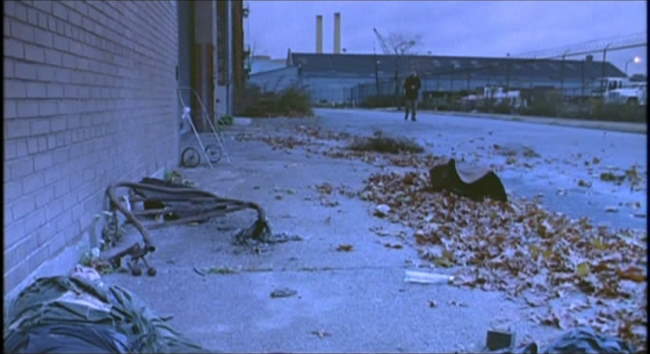
The Setting: Puzzlehead takes place in a futuristic dystopia, where all modern technology has been destroyed. Government still exists, but has devoted all resources for medical services. Unfortunately, the movie doesn’t give us enough intro as to why this occurs – the introductory narrative does mention that anti-federalists and the luddites forced the closure of all biomechanical laboratories (apparently they got rid of all “regular” technology in the cities as well), and that now, most resources are devoted to repopulation of the species. We can infer that the significant lack of people and an extreme reaction against technology coupled with at least a semblance of government might be due to some sort of genetic experiment gone awry.
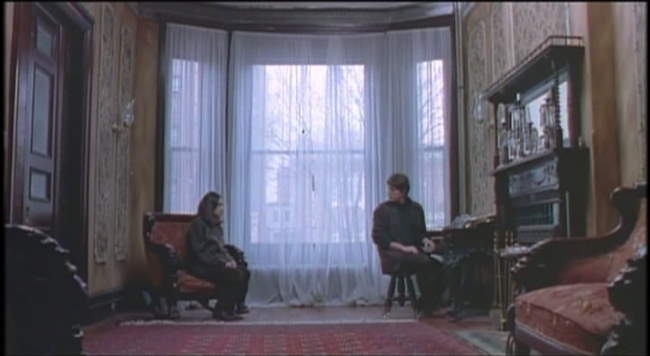
The majority of the movie takes place in a Victorian style townhouse, completely devoid of modern technology. Other sets include a decrepit, failing local grocery story, and a run-down apartment. Most external settings are comprised of run-down industrial areas. While the movie itself takes place in the future, aside for a few technology shots, the audience has to rely on the narrative and suspension of disbelief for this to work.
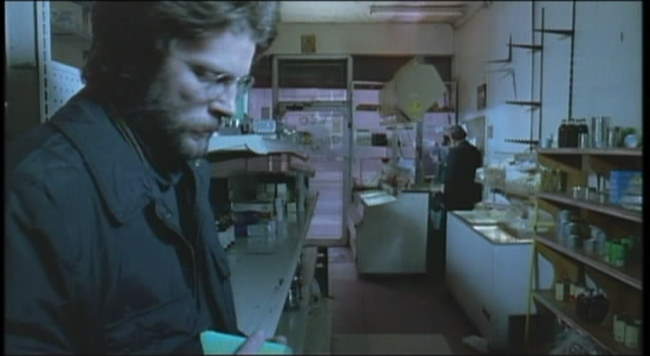
The Story: Humanity, it seems, is a shadow of its former self – random violence amongst is the norm, and virtually everyone we see in Puzzlehead is emotionally fractured. What little remains of the beleaguered populace is either making their way by becoming completely self-sufficient or by leaching off of others. It is in this setting that we focus on Walter – an emotionally fractured scientist who has trouble even walking out his front door. Unfortunately for Walter, he is in love with the very reclusive, local grocery store attendant, Julia (wonderfully played by Robbie Shapiro), but has never gained the courage to even attempt talking with her.
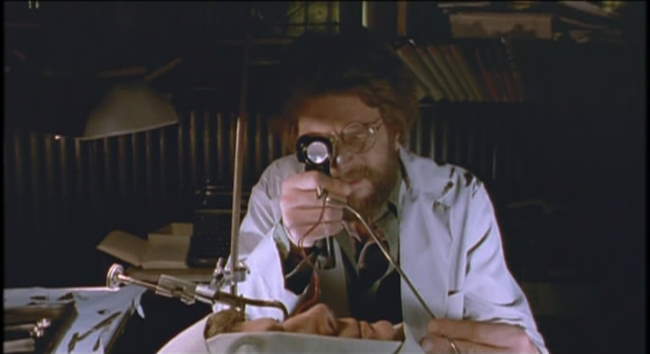
Walter (played by Stephen Galaida) decides to create an android named Puzzlehead (also played by Stephen Galaida) completely in his own image, apparently to serve as his external persona to interact in a world he prefers to avoid, and also to hopefully prompt interaction with Julia. After creating Puzzlehead, Walter spends significant time instructing Puzzlehead how to act. Walter is very derogatory controlling in his training of Puzzlehead. While Walter creates Puzzlehead with sentience, he severely restricts Puzzlehead’s behaviors. Over time, it becomes apparent to Puzzlehead that Walter has created and is using Puzzlehead for his own selfish purposes. In effect, Puzzlehead realizes that Walter sees him as nothing more than property. After Walter allows Puzzlehead to start venturing forth into society, he eventually comes into contact with Julia. Things get interesting when Walter follows up on Puzzlehead’s initial encounter with Julia.
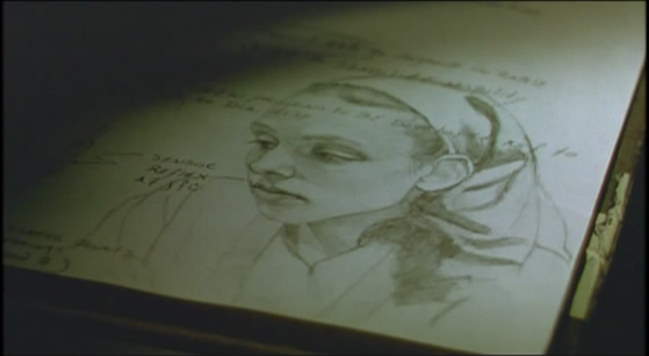
Puzzlehead Works Better on Second Viewing: Puzzlehead is told in narration format by the android, Puzzlehead, long after these events have taken place. In total, this approach works pretty well. Although, it does have the added side-effect of making the movie work better upon second viewing. There are a number of apparently throw-away comments that the narrator (Puzzlehead) gives that the audience simply can’t process until they’ve seen the story. However, upon second viewing, this adds a context to the movie that is missing the first time through.
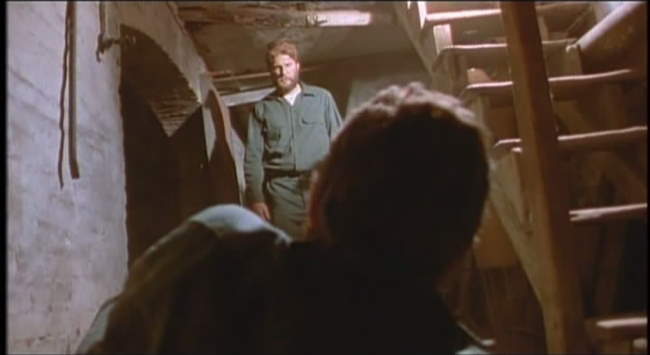
The Cinematography: Because the pacing in Puzzlehead is very slow, it runs the risk of inducing audience boredom. Luckily, this is largely overcome by the continually excellent shot selections throughout. It’s clear that significant thought went in to camera angles and interesting lighting approaches. Continually, we are treated to shots with extreme close-up foreground elements with action and movement occurring in the background. This approach, along with many low angle shots contributes to the sense of alienation the narrative provides.
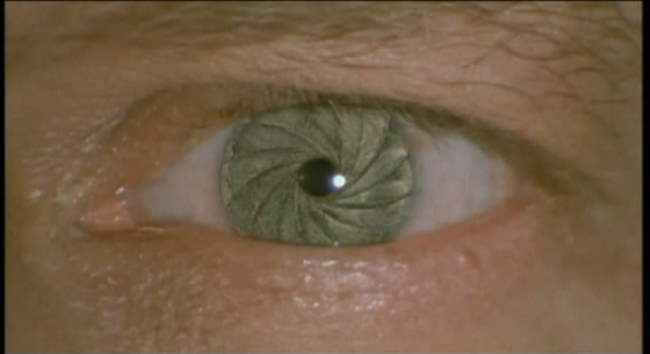
How does an Android Develop “true” Freewill? Puzzlehead provides us with a very interesting take on the development of android sentience and self-awareness. Puzzlehead is created using a neuron-scan from his creator’s brain (Walter), and thus, has all of his memories (yet, most are rendered meaningless without the context) – unfortunately, this scan has also left Puzzlehead riddled with Walter’s flaws. Puzzlehead’s biomechanical brain, like a human’s brain, is structured and controlled by belief structures and associative memories. Emotions, which are already troubling and confusing for Puzzlehead, develop into uncontrollable deviant behaviors.
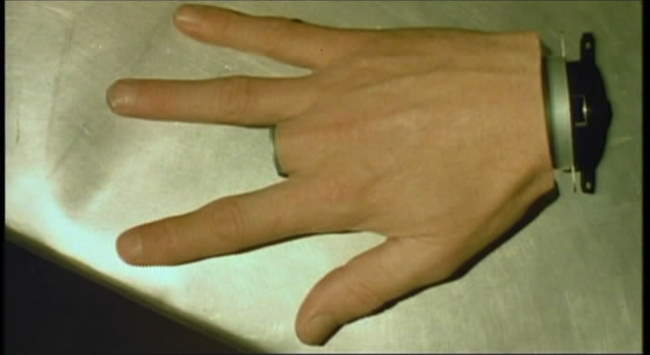
As Puzzlehead begins to develop self-awareness and freewill, he notices these tendencies that control him. These behaviors impact Puzzlehead’s ability to act the way the “real” him wants to act. His android brain, a combination of (undefined) biomechanical parts, is similar to a human’s in that he can recognize when he is doing deviant behavior, but cannot change his actions. But unlike humans, because Puzzlehead is an android, he can consider options for reprogramming his initial operating conditions. One question Puzzlehead ultimately poses is this – do androids have the possibility of becoming “exactly” the type of sentient being they want to become?
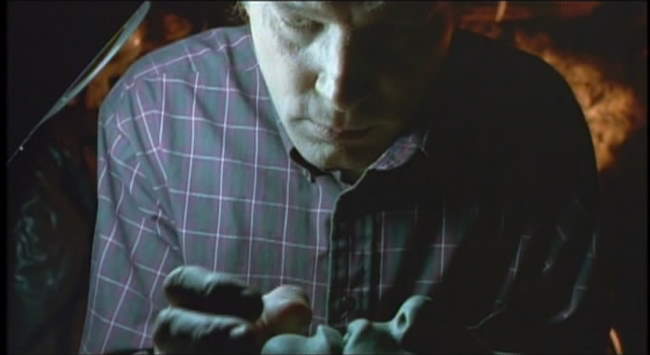
This potential ability to be “perfect” in the sense of transforming into exactly what Puzzlehead wants to become serves to reinforce Asimov’s notion that sentient robots would consider themselves superior to humans. In Puzzlehead, we get a realistic glimpse of how this might look.
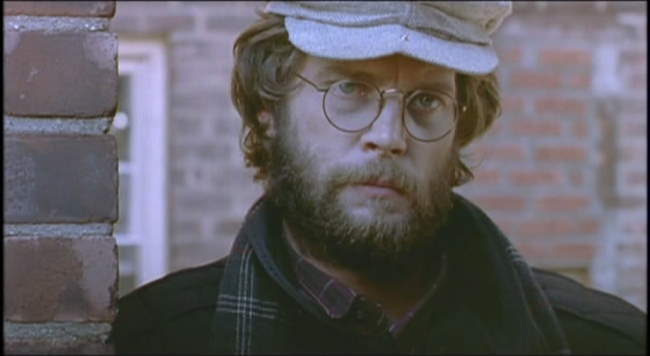
Puzzlehead is an Intensely Personal Film: In judging this movie strictly on what I could learn from watching it I give it 7 stars (I would give it 7.5 if I had half stars – something I’m still working on). As a bonus, in talking with the film maker, it turns out that the film itself is an intensely personal metaphor of James Bai’s – one that you would never guess but makes perfect sense once you are told of it. Watching it with this knowledge, the complexity of the movie itself ramps up significantly, as does its accomplishment as a film – so much so that I’m strongly inclined to add another star to the review. I won’t give this part away, but instead offer Mr. Bai the opportunity to comment here if he would like to describe Puzzlehead’s personal nature in his own words.
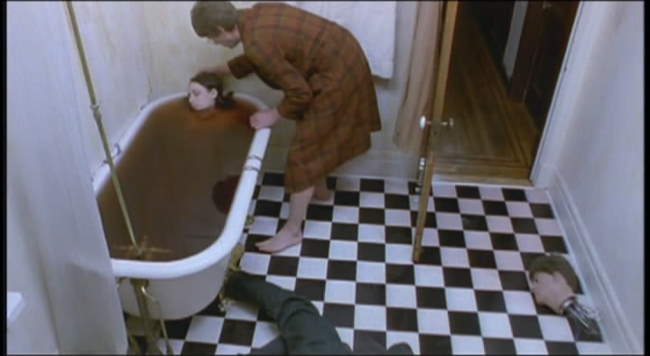
The Bottom Line: James Bai has created a very low-budget flick that’s definitely worth a watch. While I had some problems with the acting in some of the early scenes (Galaida as Puzzlehead acts way too human at the beginning, but eventually settles into the role), and a few of the visuals which seemed too 70s looking, these are diminished as the movie progresses. Bai poses some interesting thoughts on android development – some of which are unique to movies. If you can stand a very slow-paced, intellectual cyberpunk flick without a lot of cyberpunk visuals (although I LOVE the bathroom and broken arm scenes), Puzzlehead is definitely worth a watch.
~See movies similar to this one~
Movie Review By: SFAM
Year: 1996
Directed by: Jon Kroll
Written by: Mark Valenti
IMDB Reference
Degree of Cyberpunk Visuals: Low
Correlation to Cyberpunk Themes: Medium
Key Cast Members:
Menno: Bill Campbell
Loria: Stephanie Romanov
Mick Dourif, Rebel Leader: Bruce Campbell
Simon, Menno’s Friend: Michael Dorn
Felix Medina: Corbin Bernsen
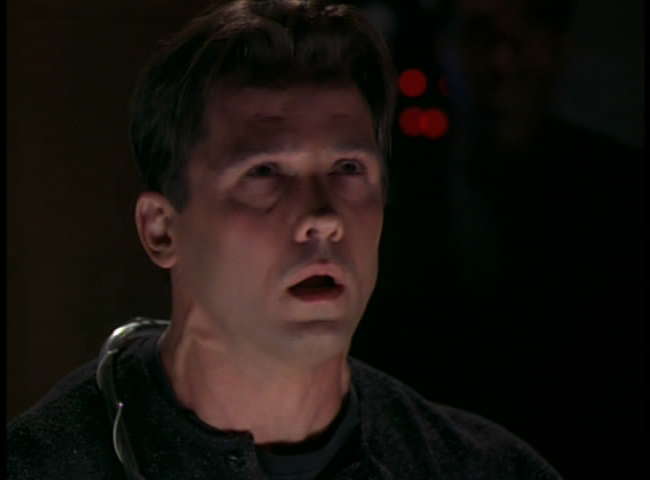
Overview: Here we have a movie with Bruce Campbell, Michael Dorn, and the very hawt Stephanie Romonov – this movie’s got to have something appealing, right? Um, not really. Menno’s Mind, a Showtime production is nowhere close to ready for prime time. The only thing worse than the acting and effects is the completely incoherent story. The FX are crappy low budget ones, but truly, nothing else in the movie even comes close to equaling them.
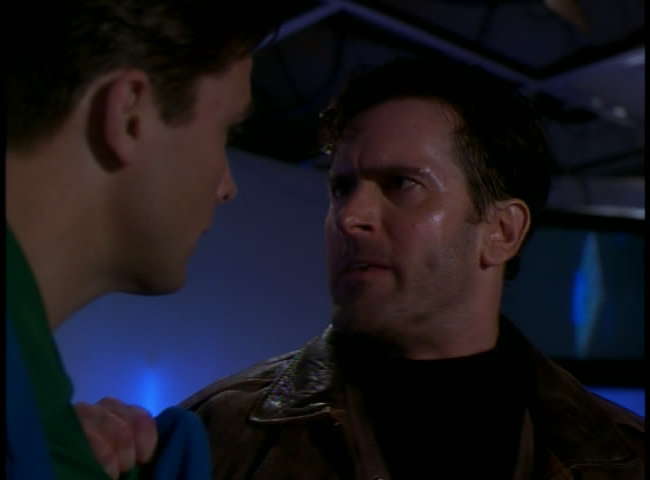
The Story: Menno’s mind takes place in a bizarre, cheesy future where everyone dresses in tacky bright clothes, except for the tough chicks, who wear black leather. Menno (The Rocketeer’s Bill Campbell) is a sappy computer programmer at a very popular virtual reality resort that provides people a choice of interesting vacations (most choose the virtual sex chick on the beach). The “System” that runs the VR vacations is very powerful, and has the capability to implant thoughts and suggestions into the vacationers. The resort’s head of security, Felix Medina (Corbin Bernsen), also happens to be running for President of the US (I shit you not…how far that office must have fallen for a head of security of a resort to be in the running!), and has decided to game the election by getting everyone who takes a vacation to be implanted with thoughts to vote for him in the election.
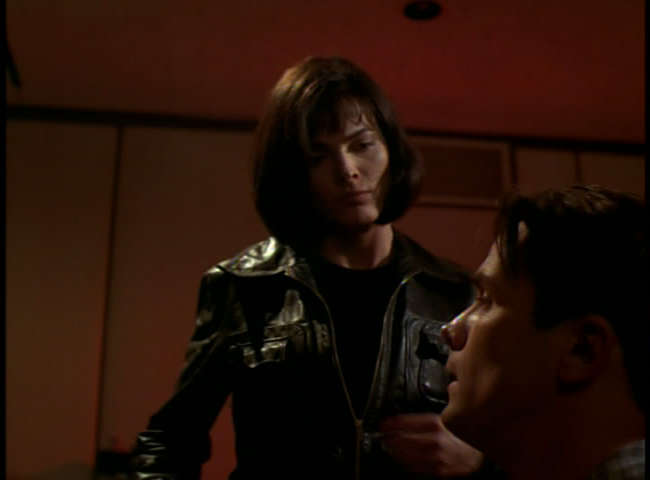
Luckily, disgruntled employee and rebel leader, Mick Dourif (Bruce Campbell), figures out the dastardly ploy and tries to stop it. Unfortunately, the bad guys have found him, and ambush his hideout. He barely escapes, goes to the VR resort, and forces Menno to upload his mind into the VR system before he dies! Yep, you heard it right, ladies and gents – although it wasn’t in the specs, apparently the VR system has the ability upload a human mind. Then things get interesting when Mick’s girlfriend, Loria, finds Menno and forces him to download Mick’s mind into himself in order to find out what Mick knew about the dastardly plot! From there, the race is on.
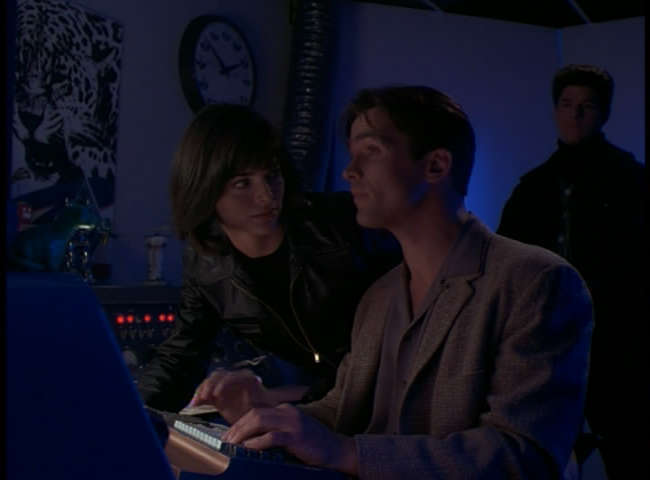
The Bottom Line: Truly, the number of problems and plot holes in this are almost uncountable. I’ll give it three stars because the production values are at least decent, but the story sucks more than words can describe. OK, so a security manager is running for President of the US – perhaps he should consider campaigning instead of trying to game a few hundred votes by convincing those who show up in the morning to vote for him – just a thought! I could go on, but the fairy science shown in this doesn’t even try to hold itself together. Worse, Bruce Campbell – really, the only reason I wanted to see this (I LOVE Army of Darkness!!!), dies early enough on that you barely get a chance to enjoy him.
~See movies similar to this one~
Movie Review By: SFAM
Year: 2002
Directed by: Gary Fleder
Written by: Philip K. Dick (story), Scott Rosenberg (Adaptation), Caroline Case et a. (screenplay)
IMDB Reference
Degree of Cyberpunk Visuals: Medium
Correlation to Cyberpunk Themes: Medium
Key Cast Members:
Spencer Olham: Gary Sinise
Hathaway: Vincent D’Onofrio
Maya Olham: Madeleine Stowe
Cale: Mekhi Phifer
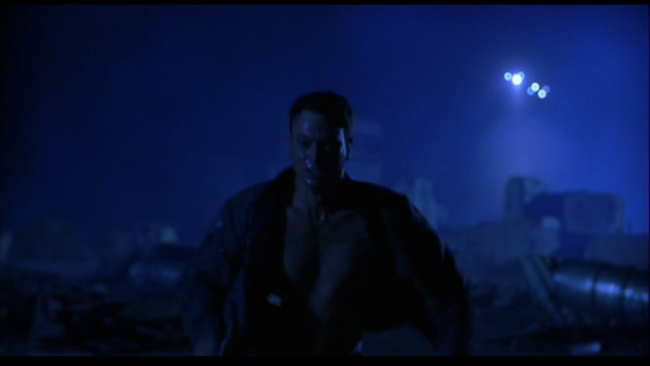
Overview: Impostor got bashed by critics for having bizarre cut always, too many slow motion scenes, and generally weird and herky-jerky cinematography decisions. Additionally, others criticize it due to originally being a 30-40 minute short that got extended into a full-length movie. While all true, I truly like both the story (basically the Fugitive, done in a near future setting) and the acting, especially by Gary Sinise and Madeleine Stowe. While the cinematography is definitely subpar in this Philip K. Dick story, the movie itself is still worth a watch.
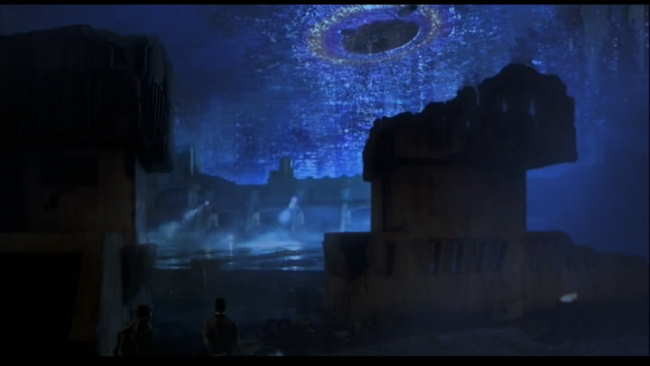
The Story: Impostor is set in the year 2079, a time when a race of aliens are attempting to invade the earth. To protect the population, humans now live in high-tech “bubbles” which seem to be able to keep out Alien weapon systems. Because of this, the aliens have resorted to creating DNA-based replicants, not unlike those in Battlestar Gallactica, by a process which apparently involves copying captured humans. These replicants are in actuality very powerful bombs, but have no self-awareness of being replicants – when their “trigger” is invoked (such as being in close proximity to their target), they explode.
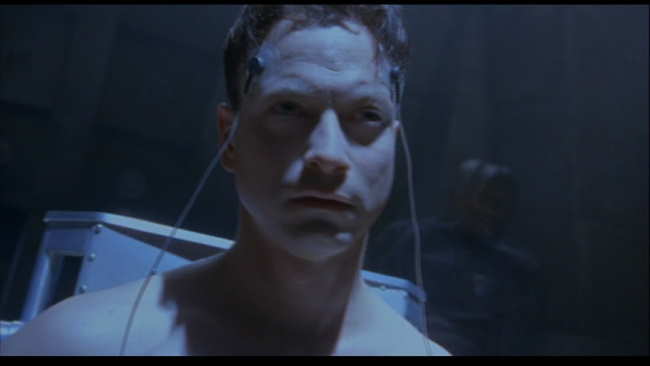
Sinise plays Spencer Olham, a weapons scientist who has been accused of being replaced by a replicant (called a cyborg in the movie). The security head (Vincent D’Onofrio) captures him and threatens to rip out his heart in order to prove that he’s not a human. Sinise escapes and then engages on a journey to prove his innocence. Olham determines that he can prove his innocence by equipment at the hospital where his wife (Madeleine Stowe) works, that compares a previous body scan with his current body. Unfortunately, he’s already gotten out of the city, and now needs to figure out how to get past security to return.
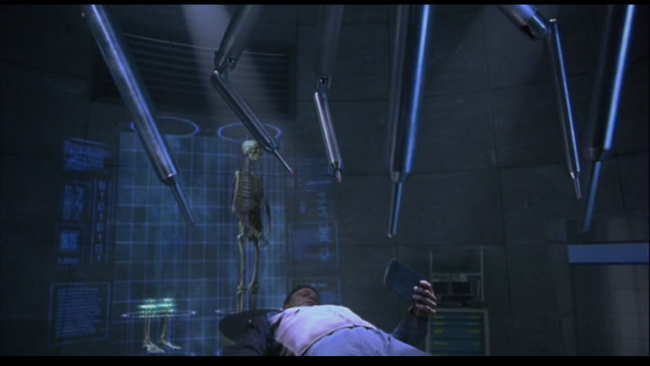
How Do You Know You’re You? This, in essence is the question Impostor is asking when it’s not in chase-filler mode. Is Spencer Olham a human caught in a horrid mistake, or is he a cyborg comprised of human-like bio-matter that is in actuality a powerful bomb sent by aliens to infiltrate Earth’s defenses in order to kill human leadership? If you were a cyborg-replicant imbued with the memories of the original host, how could you figure it out? Imposter briefly mentions the notion that the cyborgs don’t have a soul, but this is never pursued. One wishes they had come up with some way of quantifying a soul. But in the end, we are left to answer this question ourselves.
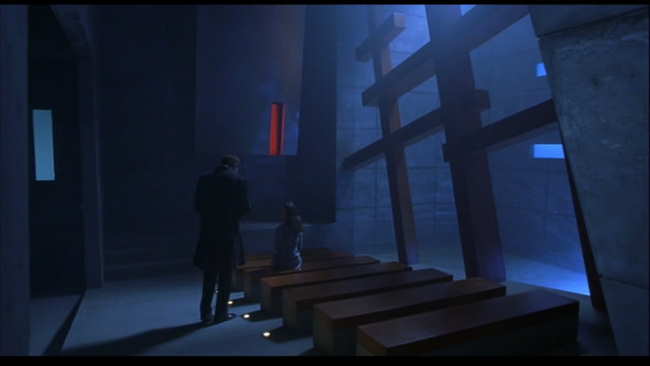
The Middle “Chase” scenes are Filler: Originally, Impostor was shot as a 30-40 minute movie short that was intended to be part of a larger collection. Apparently, Miramax liked the short enough (or cooled to the short collection idea) that they wanted it extended into a full length feature film. However, in doing so, they were left with a relatively tight beginning and tight end, and then a vast chasm of nothingness in the middle. By and large, the middle is filled with semi-pointless chase scenes that are sprinkled with people that aren’t germane to the central plot. Now we get a whole underground dystopia thing added to the mix, whereby it turns out that the nice hospital is ONLY for those who live in the bubble, while those in the outer area get little or no medicine and support. In its better moments, the middle part of the movie seems to want to emulate a “Fugitive” type feeling, but this doesn’t always work well. The DVD also includes the original movie short which is definitely worth a watch.
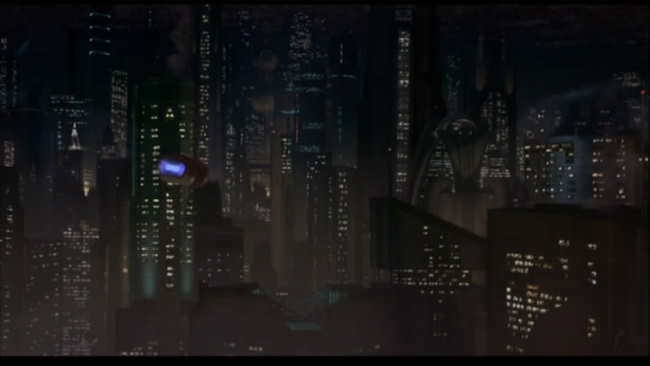
The Visuals: Impostor’s vision of the future is terrific in some places and haphazard in others. The cityscape scenes look right out of blade runner, the bubble city coverings, torture look great, but the majority of Imposter involves treks through regular looking tunnels. The torture equipment and medial imagine equipment are both more than passable. Imposter is strongly dominated by blue tones, which pervade most every aspect, from the chase scenes to the interrogation scenes.
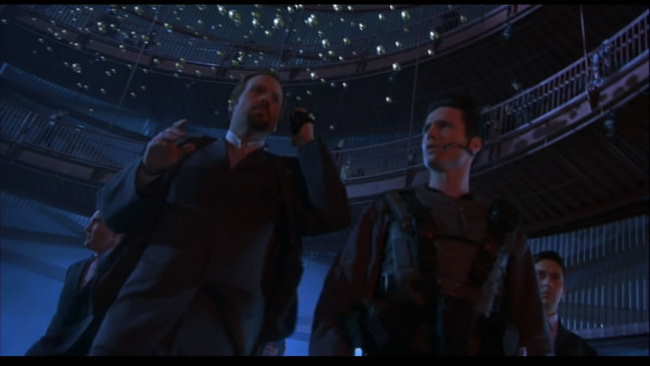
The Acting: By far, the best aspect of Impostor is the acting.Gary Sinise in particular really sells his role well, but Madeleine Stowe and Vincent D’Onofrio also give high quality performances, and Mekhi Phifer is at least passable. With slightly worse performances, Imposter could have easily ended up in the cheesy “B” Movie bin. The effects are uneven enough (some looked great, others looked TV-ish) that solid acting was a must to keep this movie watchable.
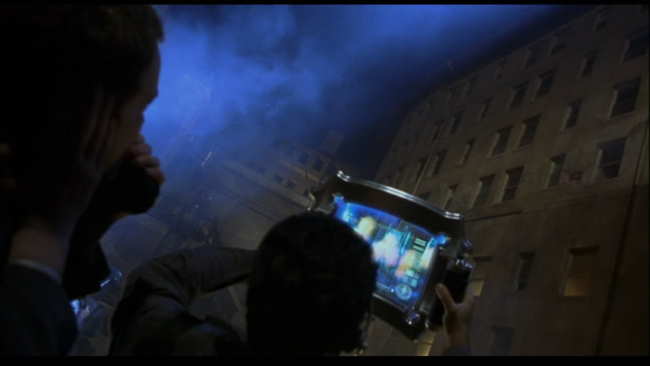
The Editing: Impostor is rightly criticized for crazy and continuous cut-shots. Rare is the shot that lasts more than 4 to 5 seconds before cutting to another view. The goal was to add to the tension of the chase scene, but the editors went overboard. Especially when combined with some strange shot angles, Imposter almost takes on an experimental vibe, as if they weren’t sure what would work, so they tried various different things.
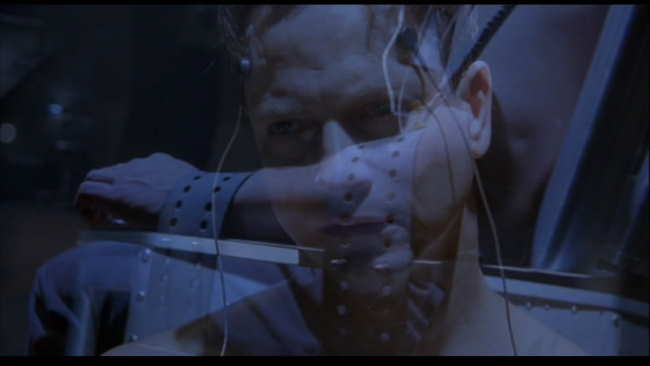
The Bottom Line: While this “Fugitive-like” movie has lots of interesting scenes, it’s the ending that I really like - definitely a cool twist. The acting is solid and the visuals are sometimes, but not always, pretty decent. There are lots of pointless tunnel-running that easily could have been cut by 15-20 minutes, and also, there are enough questions and plot holes that stop Imposter from being a great movie. Still, the question of determining humanity is an interesting one, and is well executed.
~See movies similar to this one~
Movie Review By: SFAM
Year: 1998
Directed by: Neill Fearnley
Written by: Wynne McLaughlin
IMDB Reference
Degree of Cyberpunk Visuals: Low
Correlation to Cyberpunk Themes: Medium
Key Cast Members:
Johnny Dalton: Jeff Fahey
Nikki Holland: Tahnee Welch
Frank Donahue: Michael Ironside
Bosch: John Neville
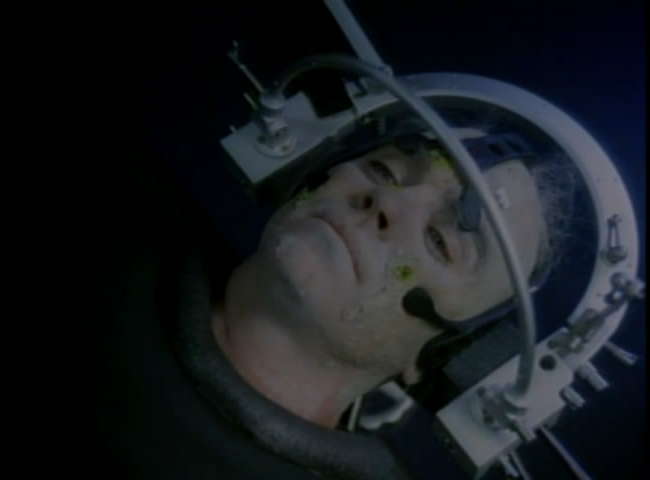
Overview: Some low-budget movies make it with a terrific story and just the right quality of effects; others come close; and others still get worried about not quite making it, so they decide to spew insane plot twists at the viewer in the hopes of increasing the tension. Unfortunately, Johnny 2.0 takes this tact. The movie was “teetering on the edge” of being decent, but fell off the wrong side. Instead of going with the stream of increasingly unbelievable plot twists, had they spent just a bit more on beefing up the story, Johnny 2.0 could have gotten some real kudos.
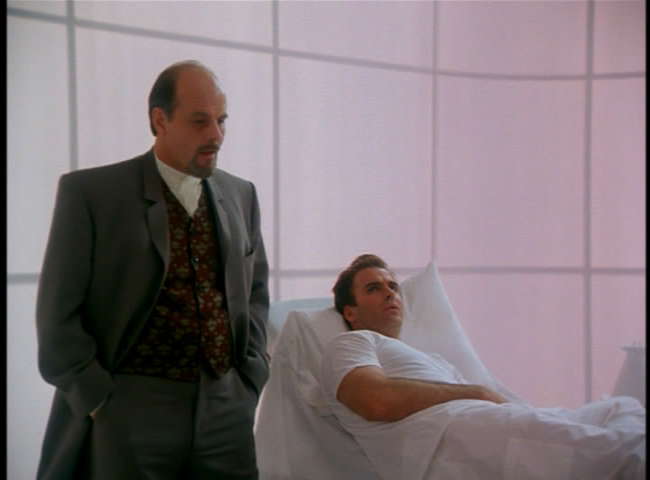
The Story: In the present, the experimentation with cloning begins to take off when scientist Johnny Dalton (Jeff Fahey) teams up with Frank Donahue (Michael Ironside) to create a small cloning start-up that has terrific potential. They are able to speed up the cloning process, and more surprisingly, are able to take an MRI scan of a person’s brain in a way that can record their entire set of memories. Unfortunately, anti-technology terrorists attack their complex and severely hurt Johnny, causing a massive, bleeding head injury.
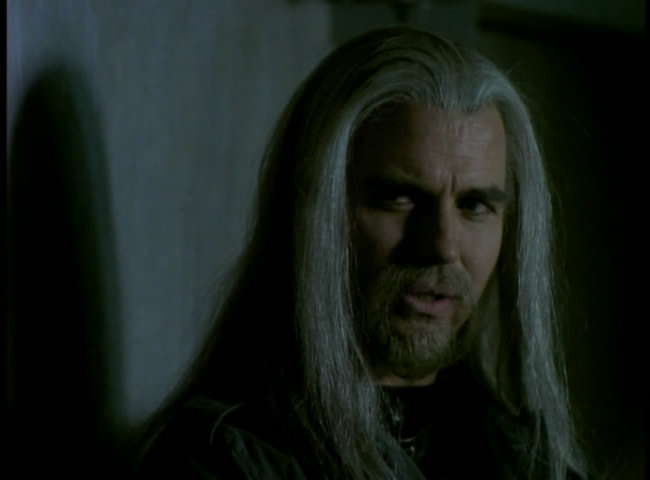
Johnny wakes up later to find that almost 20 years have passed, and that he is no longer Johnny Dalton – he’s a clone. Now referred to as “Johnny 2.0,” Johnny’s memories extend only to the injury 20 years ago when he had a scan of his memory. Now, the earth has become a dystopia, where countries have broken down, and only the corporations exist to maintain order. Worse, the “real” Johnny Dalton has either been taken by terrorists, or worse, has joined them, and has taken all his research, including a software program that removes imperfections in clones. Now, unless Johnny 2.0 can find and return the original Johnny Dalton, his body will start to break down within the week!
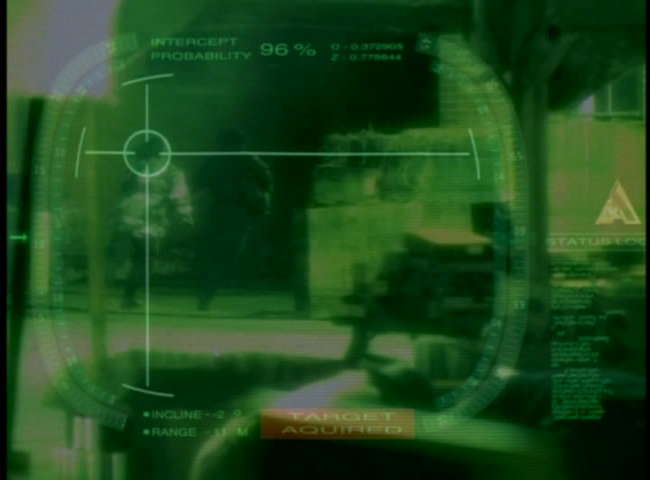
While the story starts off in an interesting way, and generally keeps a decent pacing, as things get tense, instead of resolving things in an innovative way, the viewer is continually assaulted with the most extreme plot twists. OK, one or maybe two might work, but Johnny 2.0 just doesn’t know when to leave well enough alone. Worse, in key scenes the rationale for certain characters starts to resemble the massive space invasion force surrounding Naboo in The Phantom Menace – they all seemingly took a lunch break when the counter attack came, leaving only one ship to defend their forces. When all is said and done, it’s simply not possible to suspend disbelief.
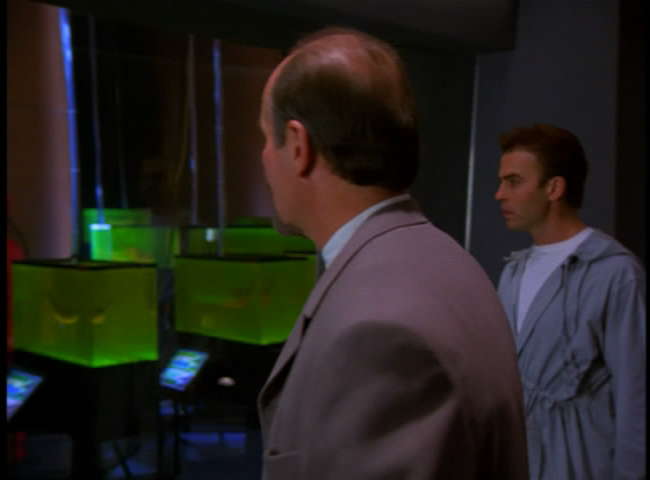
Johnny 2.0 Clone Technology Musings: For all its faults, Johnny 2.0 does have some interesting musings about cloning. The idea that clones can be sped up, and enhanced (by removing eye imperfections, improving the immune system, etc.) is interesting. More interesting is the idea that our memories can be recorded and re-inserted into a new host. Unfortunately, Johnny 2.0 doesn’t address idea with any degree of thought. In Johnny 2.0, the brain is essentially seen as an empty hard drive just waiting to be filled up with new memories. Even existing people apparently can have their memories wiped and re-inserted with new ones. Had this technology been combined with the rapid growth process, whereby a clone could be created while having their brain slowly become adapted to the imprinted memories, this would have worked lots better. Unfortunately, shortcomings in the ending narrative precluded anything unique here.
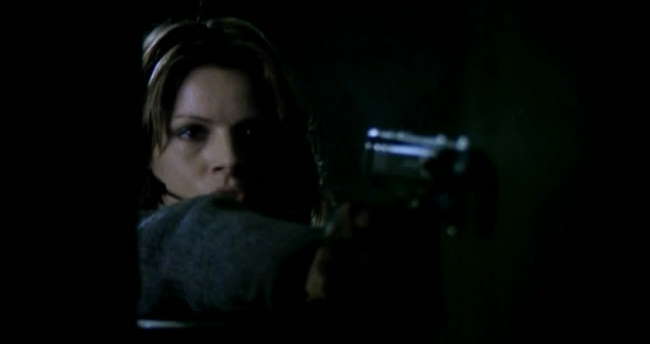
Even with the faults, Johnny 2.0 poses an interesting idea – that our existence could be perpetually extended by a combination of cloning and brain scanning. In Johnny 2.0, it’s the evil corporate head who is trying to cheat death, but if such a technology were created, one can only imagine the change we see in society. Imagine the chances we individually would take.
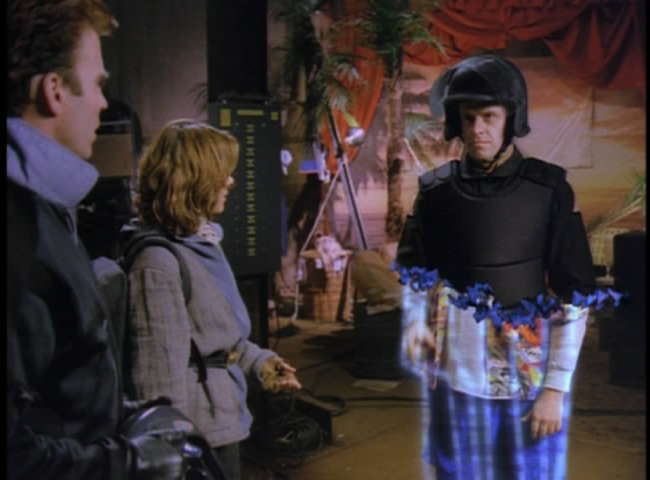
The FX: For the most part, the FX was what you’d expect – low budget TV fare. It wasn’t too distracting though, and pretty much worked for what was intended. Some of the effects, like the force field walkthrough scene was pretty forced though. One wonders why they would spend the money for a high-tech force field instead of a wall, especially when it can be penetrated so easily. They also seemed to try to stick VR helmets on everyone – this is more a sign of the times as VR stuff was hot in the mid nineties.
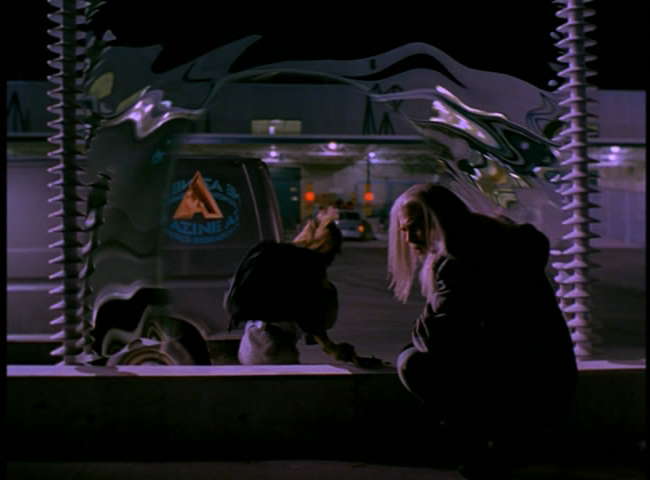
The Bottom Line: While the concept is interesting, this made for TV movie is poorly implemented. Although, there is enough here to get a modicum of enjoyment, and the movie does start off well enough that I feel compelled to give it at least a 5 star rating, especially considering it’s low budget. The actors were at least adequate (Michael Ironside of Total Recall fame was definitely the best of the bunch), so consider giving it a watch if nothing else strikes you.
~See movies similar to this one~
Movie Review By: SFAM
Year: 1991
Directed by: Shozin Fukui
Written by: Shozin Fukui
IMDB Reference
Degree of Cyberpunk Visuals: High
Correlation to Cyberpunk Themes: Medium
Key Cast Members:
Pinocchio 964: Hage Suzuki
Himiko: Onn Chan
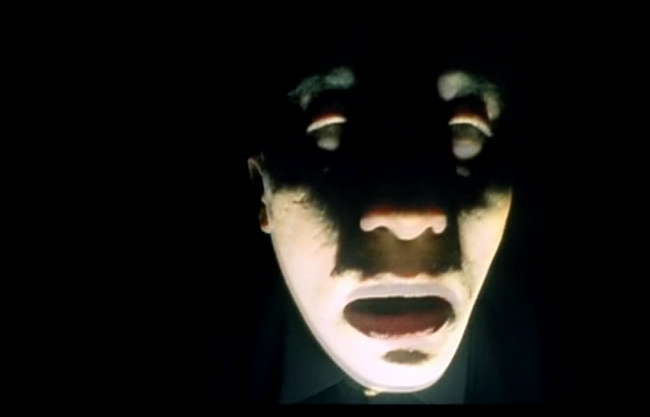
Overview: Back in 1991, Shozin Fukui and crew created a no-budget movie that provided yet another view of Japanese Cyberpunk, one very different from the first Japanese Cyberpunk movie, Tetsuo. In 964 Pinocchio, we don’t get an external merging of man and machine parts – instead, we see the residue of extreme internal struggles – ones that overwhelm the protagonists. The images are very intense, and the pacing is erratic and fast paced. While this movie is uneven and haphazard in places, 964 Pinocchio is definitely a unique experience.

The Story: In this film, 964 Pinocchio (Hage Suzuki) is a strange type of cyborg – someone that used to be human but now has been transformed into a sex slave sold as product. Unfortunately, he no longer “functions” so his owners, a pair of sex-crazed, truly bizarre and sadistic chicks, have thrown him out in the street. Simultaneously, a nurse with a mysterious past, named Himiko (played by Onn Chan), has lost her memory, and she too has been evicted to the streets.

The two outcasts meet up and seem to have a strange attraction to one another. As 964 Pinocchio is essentially a child who seems to have little understanding or awareness of the external world, Himiko takes care of him. She takes him to her living quarters in the basement of a deserted building, and takes him on a food shopping spree where they steal and eat food in the grocery store. Himiko finds out that the corporation that produced Pinocchio is feverishly looking for him, as they are afraid that their illegal process for creating sex slaves will be made public.
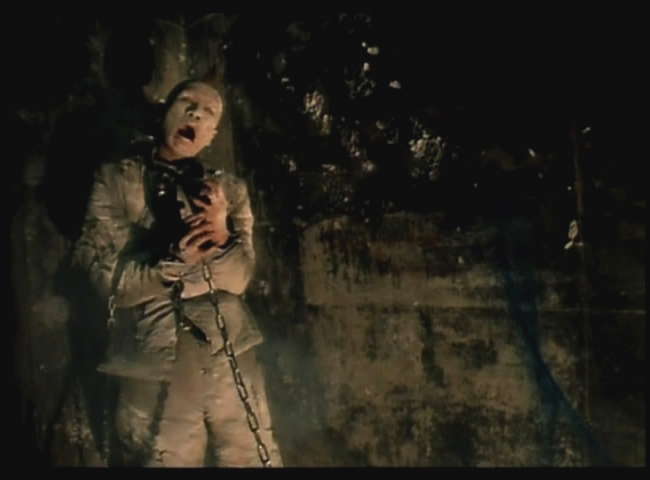
Eventually, 964 Pinocchio starts to gain awareness, and begins to wonder what has happened to him. After becoming frightened and agitated, Himiko calms him down, and then they both realize they have found a “like” soul and then make love (apparently 964 Pinocchio is able to perform when his feelings are re-engaged). Unfortunately, this event unleashes unseen forces inside of 964 Pinocchio – forces that are past the point of control. In short, all hell breaks lose – 964 Pinocchio begins spouting bodily fluids of all kinds and Himiko is thrown against the wall, and finally begins experiencing her own version of the horror. From there, the movie becomes a experiential voyage into the crazed and surreal. The corporation is still after 964 Pinocchio, but they soon discover he is not the same as he once was.
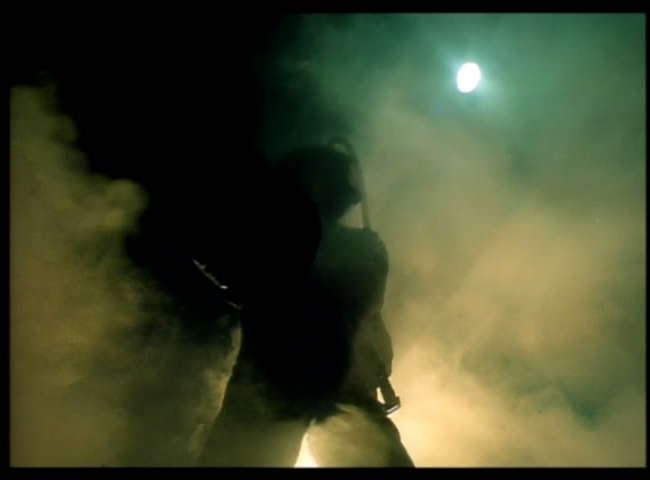
Rubber’s Lover is the Prequel to 964 Pinocchio: Even though it was created 5 years later, Fukia’s Rubber’s Lover is a sequel of sorts to 964 Pinocchio. In this film, we never really understand the process for how Pinocchio was created. Rubber’s Lover gives us a view of this. While the cover for the DVD describes 964 Pinocchio as an android, he’s really not. In fact, he’s virtually all human (although there is a drill to the forehead scene that shows brain matter being removed). If Rubber’s Lover is any guide, he was created by intense sound waves and special chemicals. So at one point he “was” human, but now is “post-human.”
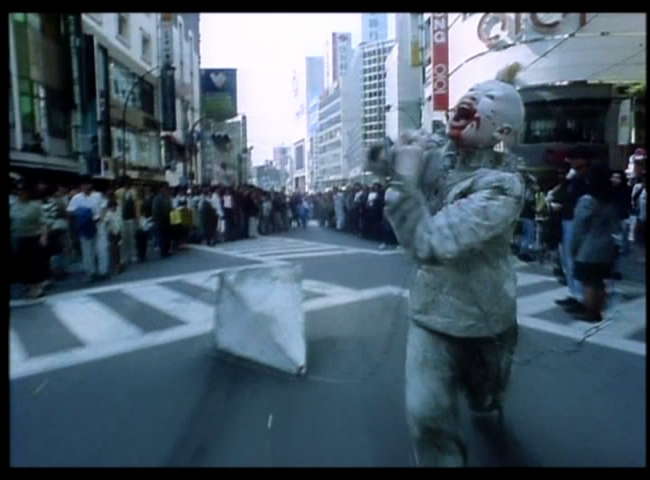
Note to Low Budget Japanese Cyberpunk Film Makers – Use B&W: Because of the low to no budget nature of 964 Pinocchio, the FX are not top quality. While they probably worked better prior to the CG world that we have today, similar to Videodrome, they look very dated in places now. This takes away from the impact of the movie to the point that it just doesn’t really work now unless you put it on a big screen and really crank up the sound. In comparing Tsukamoto’s Tetsuo (a B&W movie) to Tetsuo II: Bodyhammer (a color movie) and Fukui’s Rubber’s Lover (a B&W movie) to 964 Pinocchio, it’s clear that the mood, visuals and ambiance required for Japanese Cyberpunk is FAR better provided by B&W over color. In addition to both Tetsuo and Rubber’s Lover being better movies, they are both FAR more immersive. The low-budget B&W effects don’t detract from the mood, whereas in comparison the color effects look very fake. As an added benefit, shooting in B&W gives the film maker the a critical tool for cyberpunk mood setting: shadows. The use of shadows in a B&W film serve to create a dark, noir feeling which automatically serves up a non-normal mood.
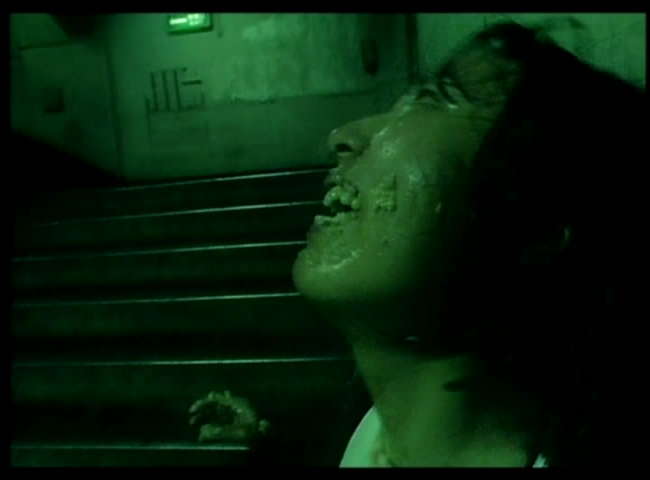
If You Have Vomit Fetish, 964 Pinocchio is For You! Fukui CLEARLY has a vomit fetish, and decides to share it with us in 964 Pinocchio. We’re not talking a wee bit’O vomit coming out - we’re talkin GALLONS worth! Himiko in particular vomits, wipes it on herself, wallows in it, and then eats it all back up! Yummy!
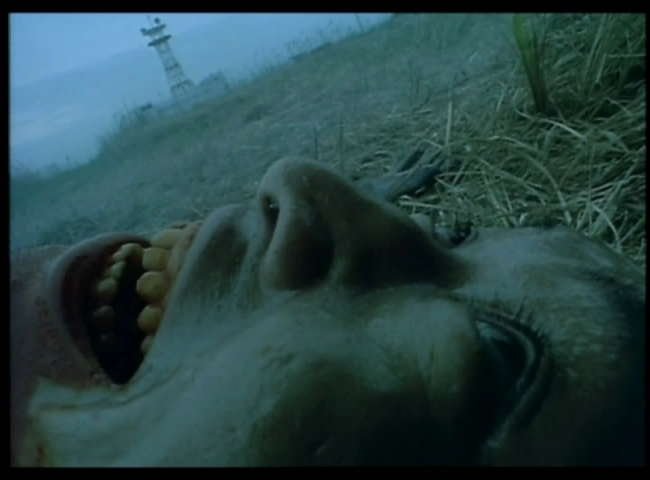
The Bottom Line: 964 Pinocchio is not polished fare, but it does etch out a place in the history of cyberpunk. The story is rather basic, and is really beside the point (many are left confused at the ending – page 2 gives a spoiler understanding if interested). The purpose is to create an immersive mood that details what happens when a dominant power emerges and exceeds human physical capacities. 964 Pinocchio is not for everyone – in fact it’s for a select few. If you aren’t a fan of extreme horror, gruesome imagery, constant screaming, jagged camera work and intense emotions, this movie is probably not for you. If you just want to see a Fukui film, you’re probably better off picking Rubber’s Lover. But if you want an instance of Japanese Cyberpunk in color – the first one in fact – 964 Pinocchio merits a watch.
Page 2: More Intense Screencaps and Spoiler Understanding of the Ending–>
~See movies similar to this one~
Year: 2004
Directed by: Omar Naim
Written by: Omar Naim
IMDB Reference
Degree of Cyberpunk Visuals: Low
Correlation to Cyberpunk Themes: Medium
Key Cast Members:
Alan W. Hakman: Robin Williams
Delila: Mira Sorvino
Fletcher: James Caviezel
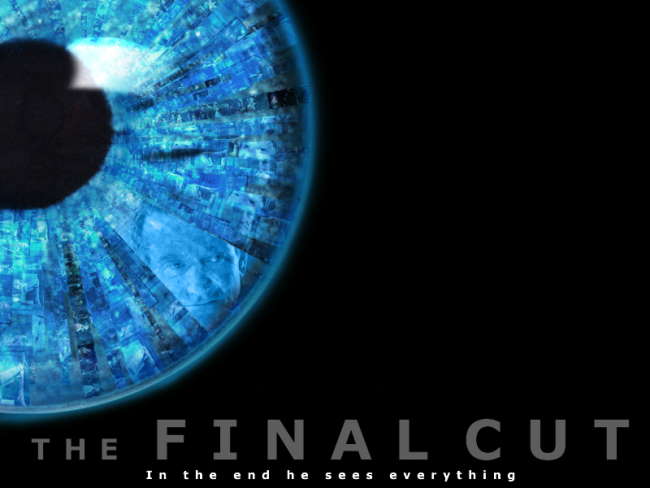
Overview: Overview: Sometimes we find a movie that has an idea so intriguing that it just can’t fail to be great – yet the director still finds a way to screw it up. The Final Cut is this kind of movie. The Final Cut explores the idea, “If every moment of your life was recorded on camera, would you live differently?” While you might expect a focus on the changes to society this technology engenders, instead, it turns out that the entire purpose of a camera implanted in you at birth is to have a paltry video “rememory” of your life at your funeral!!!! Gee, wow – yeah, that’s what I’d do with that technology – screw up my whole life so that people at my funeral can be bored to death with even MORE home movies!
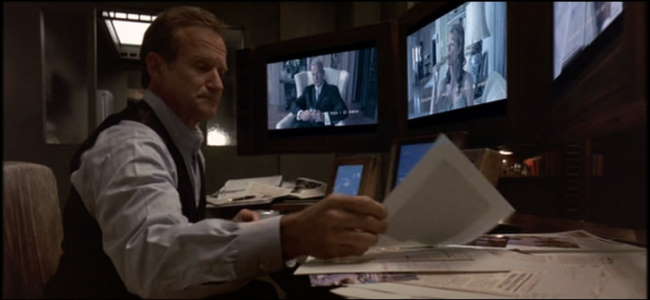
Cutter Code of Ethics
i. A Cutter cannot sell or give away Zoe footage
ii. A Cutter cannot have a Zoe implant.
iii. A Cutter cannot mix Zoe footage from different lives for a Rememory.
The Story: The Final Cut takes place in a near future scenario that looks almost exactly like the present, with one exception – a technology that can be implanted directly into the eyes prior to birth is now in vogue. The purpose of this technology, created by the Zoe corporation, is to record your life so that upon your death, a “Cutter” can compose a “rememory” of your life to immortalize you for all time. This “Rememory” isn’t really representative of someone’s actual life, but is instead a compilation of how the family members “want” to remember you (hence, the term “rememory”). Alan Hakman, played by Robin Williams, is a Cutter-extraordinaire. He is brought in by family members when the deceased was a major scumbag in real life. His job is simple – he must take the available memories and “compose” a final cut of their life that leads everyone to think this scumbag was actually a saint.
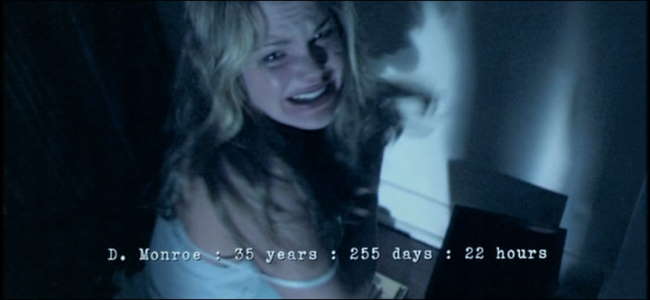
Unfortunately for Alan, his latest rememory scumbag – a child molester – is high profile enough that there are people looking to gain access to this guy’s memories. Alan is in danger of breaking one of the rules of the Cutter oath (a Cutter cannot sell or give away Zoe footage). Worse, in viewing the footage, Alan sees a childhood friend who he thought he accidentally killed dead long ago. Now horrible memories of Alan’s childhood come crashing back – so strong that he can’t help but investigate. And in the process of doing so, Alan realizes he may have broken another more critical Cutter law.
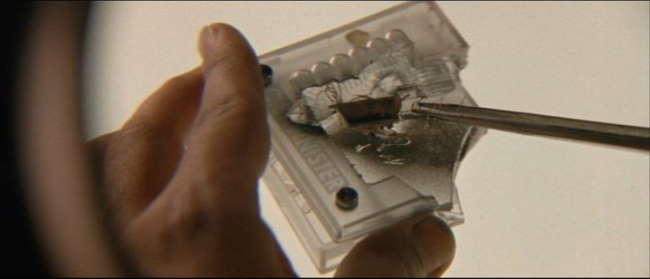
The Use of the Technology: The most annoying part of The Final Cut is the idea that a technology this powerful would only be used to compose a home movie at a funeral. This simply doesn’t pass common sense muster. Even if the Zoe Corporation wouldn’t allow scans of the technology when alive, a groundswell of techy-hacker types would find a way to do this. More likely, a technology such as this would be accessed by people on a regular basis. An audio-video record of everything you see could spurn all sorts changes in society. While the Final Cut touches on the change in personal interaction, this becomes hard to believe if the only implication is that someone’s entire life will be boiled into a 30 minute slice at the funeral. I mean, what are the chances that anything incriminating would show up there, especially if the job of a Cutter is to suppress all the juicy sleazebag stuff? Again, terrific idea with lots of promise – but the Final Cut almost completely wastes it.
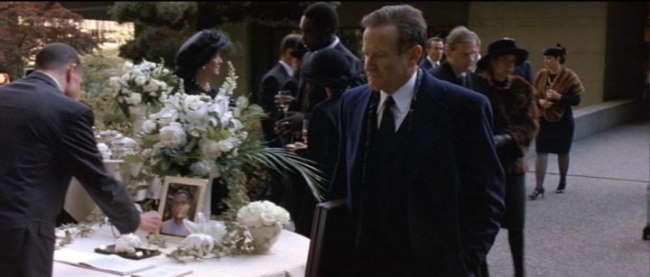
“My job is to help people remember what they want to remember.”
The Acting: Even though the script is hurting in this movie, Robin Williams turns in a terrific, if sedated performance. He really adds credibility to a plot that otherwise could have been horribly received. Unfortunately, Mira Sorvino in a supporting role really isn’t given enough to have the chance of making much of an impact. James Caviezel does turn in a cool performance as a conflicted bad guy.
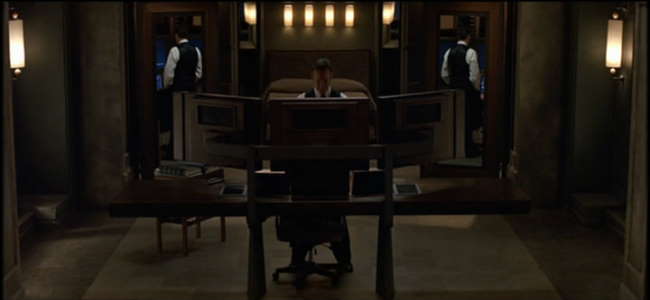
The Bottom Line: Visually, there is little interesting about The Final Cut. Thematically, the movie is frustrating in that it had the potential to be very interesting. Fortunately for the viewers, Robin Williams flat out rescues the Final Cut from mediocrity to the point that you still will care enough about the technology to spend a moment or two thinking about it’s potential impact on society. And truly, regardless of the plot holes in this film, the technology concepts are just not that far-fetched. In an age where RFID chips are already being implanted in people, a microscopic video camera integrated into the eyes tied to a micro-hard disk may not be that far away. This “very-near” future potential adds credibility to the visuals which generally show a current society. If you are interested in thinking through the potential impact of technology such as this, The Final Cut is a decent watch. If you like Robin Williams, it’s a MUST SEE movie. Otherwise, you can probably make it through life without giving the Final Cut a viewing.
~See movies similar to this one~
Tags: Movie Review
Year: 2002
Directed by: Vincenzo Natali
Written by: Brian King
IMDB Reference
Degree of Cyberpunk Visuals: Medium
Correlation to Cyberpunk Themes: Medium
Key Cast Members:
Morgan Sullivan: Jeremy Northam
Rita Foster: Lucy Liu
Finster: Nigel Bennett
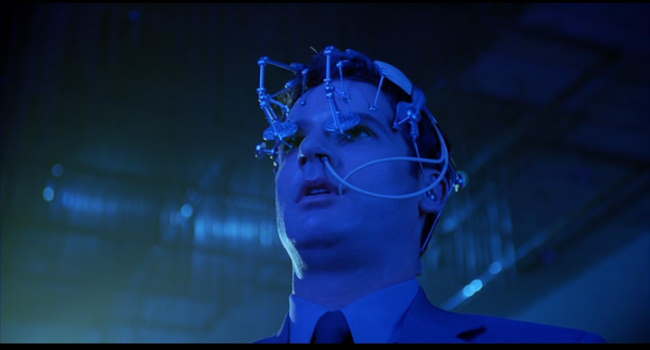
Overview: Canadian film maker Vincenzo Natali, master of doing more with less, delivers us an excellent cyberpunk flick for a virtual pittance budget. At 7.5 million, Cypher is FAR more polished than it has any right to be. This paranoid conspiracy, near-future espionage thriller provides a continual stream of mindfuck moments. Expect your head to get jerked around so much that you’ll need to check yourself for whiplash after watching it.
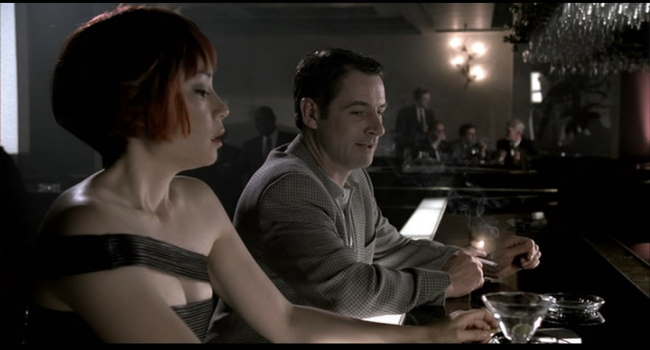
The Story: Jeremy Northam stars as Morgan Sullivan, a nerdy and slightly incompetent salesman who leads a bland life. His job is boring, his nagging wife is overbearing, and he spends most of his time yearning for some excitement to infiltrate his mundane life. In pursuit of this, Morgan applies for a job at Digicorp, a high-tech company, to become a corporate spy. But so far, the job is not the excitement he was looking for. The job involves assuming an fake identity, and then traveling to various non-envious US destinations and secretly recording boring conference speeches.
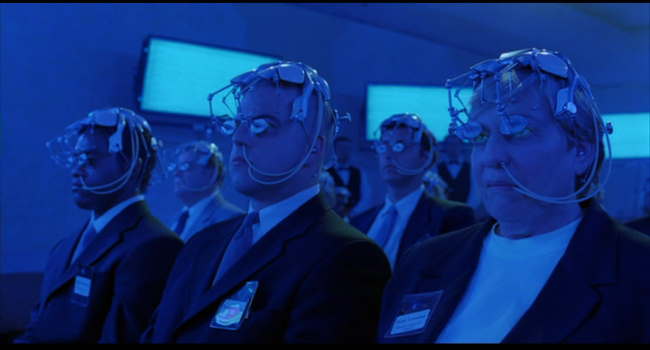
Morgan, now calling himself “Jack Thursby,” develops a persona associated with the name he’s given by Digicorp. He starts to imagine himself to be a suave and sophisticated player, who likes to smoke, drink scotch and pick up sexy women at hotel bars. During one trip he meets Rita Foster (Lucy Liu), who claims to work for a freelance expert named Sabastian Rook. She warns him that he is being brainwashed by Digicorp in order to infiltrate their rival company, Sunways Corporation.
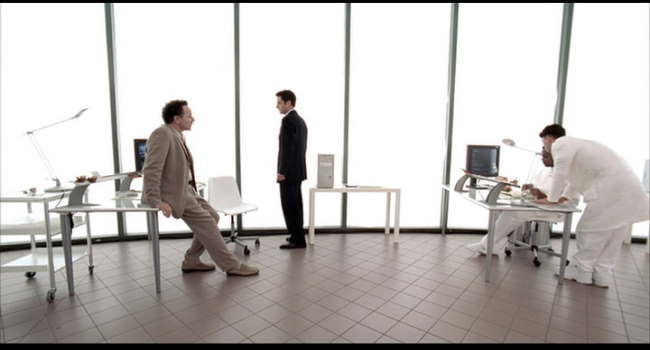
From there, the story becomes too complex to try explaining. The plot reveals layer upon layer of unraveling truth and reality. Morgan realizes he has become enmeshed in an ongoing high stakes corporate battle, and worse, events have so overtaken him that he has nowhere to turn and can trust nobody. Everyone wants to use him for their own purposes, as Morgan, while still a pawn in the larger scheme of things, has come into play.
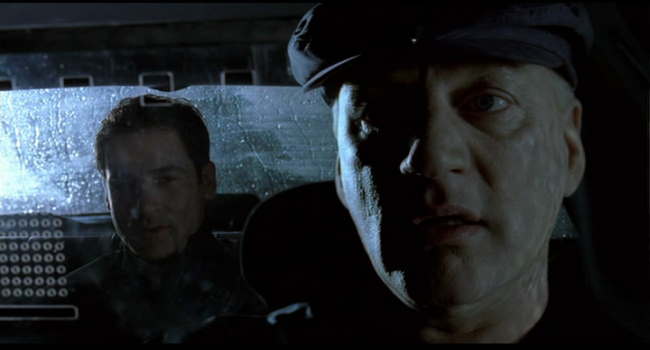
The Acting: Jeremy Northam, a British character actor, is simply brilliant at acting completely different personas over the course of the movie. He really nails a role requiring complex and diverse acting. Lucy Lui plays a terrific femme fatale who leads Morgan further down into the abyss. The rest of the cast also holds up well, including Nigel Bennett as Digicorp’s mysterious representative, and David Hewlett, who plays a completely bizarre character who lives in a data vault.
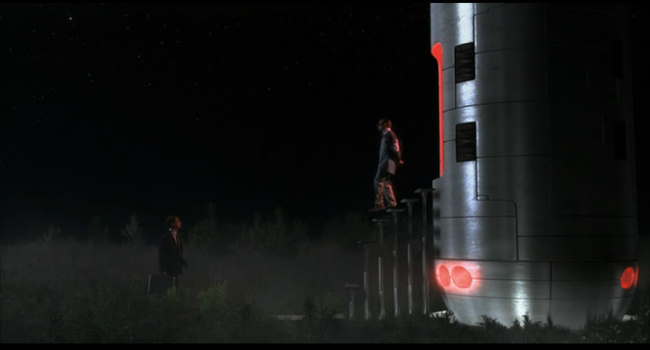
The FX: Truly, I’m blown away that Natali is able to pull over as many special effects as he has with a 7.5 million dollar production budget. The brainwashing headsets are clearly the highpoint of the movie, but many of the effects throughout are muted, but important. In looking at Cypher, most would conclude that this should have taken at least 25 million or so, and even then, they would have needed to watch costs. The range of sets, and completely different looks staggers the mind when the overall cost is presented. Make no mistake – I’m not comparing Cypher to big budget fares like the Matrix, but for the money, Cypher’s FX really look terrific. More importantly, they add important touches in bringing a near-future feel to an otherwise modern day setting.
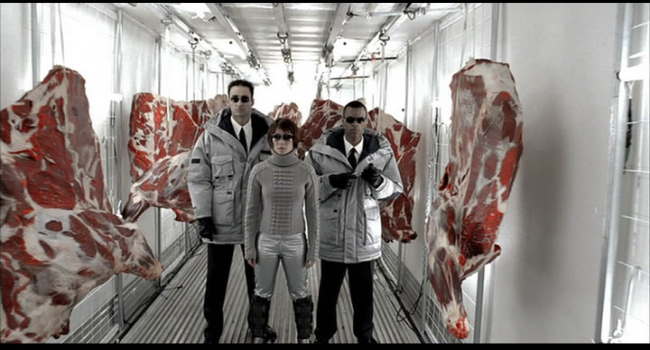
The Bottom Line: In many ways, Cypher comes across as a cyberpunk version of Hitchcock’s North by Northwest. The pacing and feel of Cypher is very similar, and in both movies, you really never know what’s coming around the next corner, but most assuredly it will involve more layers of out-of-control untruths. With all the goodness that Cypher gives us, you’d almost expect the final score to be a 9 or 10. But unfortunately, Cypher’s story falls apart at the end. The technical believability, which is decently high throughout the film, flat-out does a belly flop at the end, and expects us to buy something that anyone who knows a whit about data security, just can’t stomach (I can add a spoiler page on this if anyone is interested). However, this sore point is not enough to sap enjoyment out of an otherwise wonderfully made film. You may not have heard of Cypher, but this is not an indication of its quality. Give it a go – chances are you’ll love it!
~See movies similar to this one~
Year: 2004
Directed by: Masahiko Maesawa
Written by: Chinfa Kang
IMDB Reference
Degree of Cyberpunk Visuals: Medium
Correlation to Cyberpunk Themes: Low
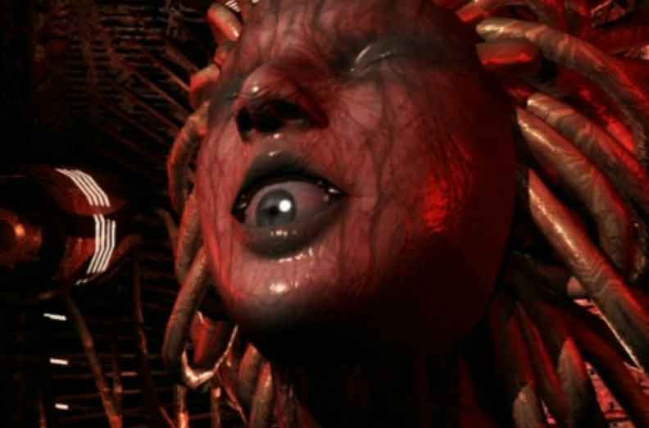
Overview: Galerians Rion is a a low-quality animation - meaning video game quality with a semi-coherent story. Unfortunately, the story too plays like a video game. The star of the video game is a boy named Rion, who wakes up in a bizarre dystopic version of his former world. It turns out that this crazed supercomputer named Dorothy is attempting to become a God and only Rion can stop her. To do so, he needs to find his sister Lilia, who, along with Rion, has been given a virus that combined, can destroy Dorothy. As most RPGs, Rion’s powers grow as he fights the Galerians that Dorothy throws up to block his journey to finding his sister. You can tell the end of the segment, because, um, Rion fights a boss character. Yes, you really are watching someone play a video game here!
The Bottom Line: While I am impressed that Maesawa was able to produce an anime on such a limited budget (I’m guessing a game environment was used to make most of the visuals other than Dorothy), they just aren’t good enough to make for compelling viewing. The visuals are rather fascinating in places - Dorothy (see above) is pretty cool for instance - and certainly are cyberpunk, as is the story, but there just isn’t enough here, either in story or visuals to make this worth recommending. I will give it a point for attempting to do a full scale anime without a budget.
~See movies similar to this one~
|














































































